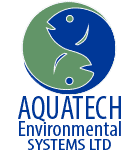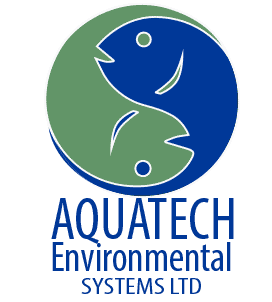Definition of Terms
Terms and Definitions
Alkalinity
It is a total measure of the substances in water that have “acid-neutralizing” ability.
Aerobic
Having molecular oxygen present; growing in the presence of molecular oxygen.
Anaerobic Decomposition
When all the oxygen is consumed, the decomposition process continues without oxygen. This is called anaerobic decomposition and the compounds it produces cause changes in the water’s taste and odour.
Aquaculture
Captive rearing of fish, shellfish, and other economically important aquatic organisms under managed conditions.
Aquifer
Geological bed or stratum that is far reaching and porous enough to readily yield a supply of groundwater to one or more wells or springs.
Bacterial Augmentation
The technique of seeding water purifying and organic waste decomposing bacteria into water bodies. Refers to the bacterial part of bioaugmentation.
Benthos
Animal or plant life living in direct association with the bottom material of a lake, river, or sea ant any depth of water.
Benthic invertebrates
Community of invertebrate species associated with the living portion of the benthos and forming a vital link in the food chain for higher order species.
Bioaugmentation
is the general process of seeding water purifying organisms in water bodies.
Biochemical oxygen demand (BOD)
Amount of oxygen in water that is consumed by micro-organisms during decomposition of a substance.
Biodegrade
Decompose by natural means: to decay naturally as the result of the action of bacteria.
Biomass
The entire assemblage of living organisms, both animal and vegetable, of a particular region, considered collectively.
Bloom
A massive growth of aquatic plant life, called a “bloom,”
Chlorides
in solid form are salts containing chloride and a metal. In water, these salts dissolve, forming chloride ions and metal ions.
Cyanobacteria
Group of organisms related to true bacteria and belonging to the kingdom Monera; also called blue-green algae.
Decomposition
Breakdown of complex organic materials into simpler materials by microorganisms.
Denitrification
Reduction of nitrogen oxides (usually nitrate and nitrite) to gaseous molecular nitrogen or other nitrogen oxides by bacterial activity or by chemical reactions involving nitrite.
Dugout
Artificial pond, typically 4 to 6 metres deep and 2000 to 6000 cubic metres in capacity, designed to provide a 2-year water supply with allowance for evaporation losses and ice formation.
Ecological
The relationship between organisms and their environment.
Enzyme
Any of a group of complex proteins, that act as catalysts in specific biochemical reactions.
Eutrophication
Natural or human-induced enrichment of nutrients (especially phosphorus and nitrogen) in a body of water, resulting in high productivity that may overcome natural self-purification processes; its undesirable effects include algal blooms, low oxygen levels, and reduced survival of some fish and invertebrates species.
Evapotranspiration
Movement of water into the atmosphere by evaporation from the soil and transpiration from plants.
Filamentous Alage
Freshwater algae characterized by long threads or filaments of narrow cells attached to one another, end to end. These filaments are sometimes branched, forming a tuft attached to stones (they have no structure comparable to a root). In early spring they grow on the pond bottom rising to the surface during hot, sunny weather to form a bubble-filled scum. Determination of various forms of filamentous algae should be verified by microscopic examination. Common genera of filamentous algae include Cladophora and Spirogyra.
Groundwater
Subsurface water, the upper surface of which forms the water table in geological materials such as soils, sand and gravel deposits, and bedrock formations; it is free to move by gravity or under a hydraulic head.
Hard water
Water with high concentrations of divalent metallic cations, principally calcium and magnesium bicarbonates and sulfates, that make it difficult to produce a lather with soap and that leave a scale when water is heated (e.g., in kettles and boilers).
Heavy metal
Metal element with a high atomic weight, such as cadmium, chromium, cobalt, copper, lead, mercury, molybdenum, nickel, selenium, and zinc.
Hydrologic cycle (also water cycle)
Naturally occurring, solar-driven cycle of evapotranspiration, condensation, precipitation, and runoff of water; movement of water between the atmosphere and terrestrial and aquatic environments.
Nitrate
Soluble form of nitrogen that is a common source of nitrogen for plants; naturally present in groundwater and surface water but sometimes elevated to pollution levels by human activity.
Nitrogen Key
crop nutrient and water pollutant in soluble forms such as nitrate.
Nutrient Substance
required by an organism for proper growth and development; key crop nutrients are nitrogen, phosphorus, and potassium.
Nutrient Loading
Total quantity of a nutrient carried, or received, by a water body over a specified period of time.
Organic
Of, relating to, or derived from living organisms: organic matter. Chemistry. Of or designating carbon compounds.
PH
The percentage of hydrogen ions (H+) in a solution is called the pH.
Phosphates
which contain phosphorus, is a plant nutrient that can also be a pollutant.
Phosphorus
Key crop nutrient and potential water pollutant, especially of surface waters.
Photosynthesis
Process by which plants transform carbon dioxide and water into carbohydrates and other compounds using energy from the sun captured by the plants’ chlorophyll.
Planktonic Algae
These microscopic organisms may be single or many-celled, and commonly form simple chains or clumps due to their gregarious nature. They appear green, blue-green or brown in colour and float freely within the water column. The growth of certain forms of this type of algae may become so great that the water may take on a thick pea soup appearance. “Algae blooms” collect at the surface of the water during periods of calm and are concentrated in-shore by wind. As these “algae blooms” die off and decay, the resulting oxygen depletion of the water may cause summerkill of fish populations. Some species of planktonic algae release toxins as they decay, occasionally rendering the water poisonous to livestock and wildlife. Other species may impart tastes and odors to water, making it undesirable for consumption. Types of planktonic algae which may form “algae blooms” in ponds and lakes include Aphanizomenon, Microcystis, and Anabaena.
Pollution
The act or process of polluting or the state of being polluted, especially the contamination of soil, water, or the atmosphere by the discharge of harmful substances.
Preactivation
is a technique which increases the size of the community of the beneficial microorganisms, while optimizing their physiological condition to maximize production of exoenzymes to solubilize sludge and grease.
Precipitation
Any form of water, whether liquid (e.g., rain or drizzle) or solid (e.g., snow or hail) that falls from the atmosphere to the ground.
Preconditioning
is a technique designed to allow bacteria the time to recognize target substrate(s) and to develop appropriate internal enzymes to degrade these substrates(s). This technique was developed to accelerate the biodegradation process.
Rejuvenate
Return something to original condition: to restore something to it’s condition when new, or make it more vigorous, dynamic, and effective.
Remediation
The act or process of correcting a fault or deficiency.
Soluble can be dissolved, especially easily dissolved: soluble fats.
Riparian zone
Land immediately bordering a watercourse or water body.
Runoff
The part of precipitation and snowmelt that reaches streams by flowing over or through the ground. Surface runoff flows away without penetrating the soil. Groundwater runoff enters streams by seeping through soil.
Salinity
(the concentration of dissolved salts in the water)
Sea water intrusion
Underground movement of water with high salt content into wells located near marine shorelines, often as a result of excessive withdrawals of fresh water from the well.
Sediment
Soil particles that are carried in surface runoff and deposited in surface waters such as streams and lakes.
Sedimentation
Deposition of sediment in surface waters such as streams and lakes.
Slough
Shallow depression containing water for at least part of the year; typicall found in the Prairies.
Surface runoff
Water running off the land on the surface.
Suspended sediment
soil particles held in suspension in water.
Transpiration
Loss of water vapour through the stomatal openings in plants, or by evaporation from cell tissues.
Turbidity
cloudiness in water, is caused by suspended solid matter which scatters light passing through the water.
Watercourse
Moving body of water, such as a creek, stream, or river.
Water cycle
See hydrologic cycle.
Water quality
Chemical, physical, and biological characteristics of water; fitness of water for a specific use, such as aquatic habitat, drinking water for humans, and irrigation.
Water table
Zone of water saturation in soil; upper surface of the groundwater, found at a depth at which the pressure in the water equals atmospheric pressure.
Watershed
An area of land, sometimes under forest cover, that drains water, organic matter, dissolved nutrients, and sediments into a lake or stream; the topographic boundary is usually a height of land that marks the dividing line from which surface streams flow in two different directions.
Wetland
Area of land frequently or permanently inundated by surface water or groundwater and generally able to support vegetative or aquatic life that requires saturated or seasonally saturated soil conditions for growth or reproduction; under the Canadian Wetland Classification, there are five wetland classes, 70 wetland forms, and numerous wetland types based on vegetation.
Aquatech Environmental Systems Ltd.
Phone (250) 932 1646
E-mail: mail@aquatechenvironmental.com


